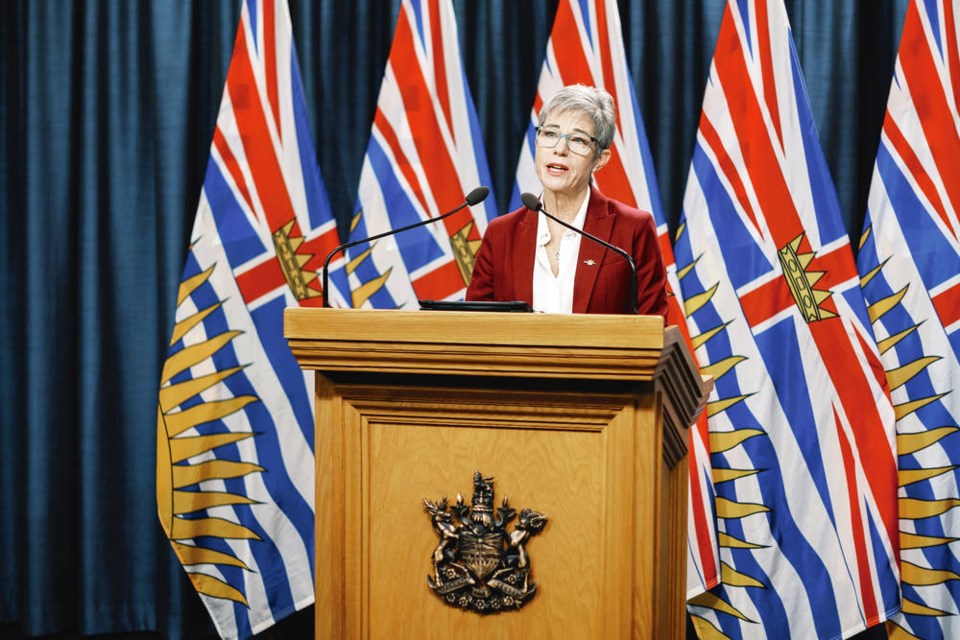The size and shape of the unavoidable new mountain of debt that B.C. is piling up changes slightly every time the government tries to describe it.
COVID-19 struck so abruptly and moved so quickly that keeping tabs on the economic fallout was almost as hard as dealing with the medical and health issues.
Thursday marked the third time this year the government has updated the provincial books to reflect the impact of the pandemic. The updates are so different from the balanced budget delivered in February, you can scarcely process the numbers.
The $227-million surplus that was projected then is now a $13.6-billion deficit. That’s five times higher than B.C.’s previous record deficits, in 1991 and 2003. One of the debt-to-revenue ratios is now over 100 per cent, likely for the first time ever.
The latest update refines the information in the previous two reports and adds a microdose of optimism to the mix. Although the deficit climbed higher, in some respects the new outlook is not as bad as was expected in July and September.
Of nine major measurements used to describe the state of the economy, the new estimates in all of them are better than they were in the previous reports.
The most notable changes are the projections in retail sales and real estate.
The first update in July was filled with so much uncertainty, they called it a “scenario” rather than a forecast and included three of them to cover the bases. It projected revenue losses across the board, counted more than $5 billion in emergency spending and estimated a deficit of $12.5 billion.
That was based partly on expectations of a 16 per cent slump in retail sales, and a 26 per cent drop in residential real estate, among many other impacts.
A later quarterly report in September tempered that outlook. Retail sales weren’t down as much, and real estate was looking to be down just 10 per cent.
But the latest report says retail sales rebounded from a huge drop in April and have now surpassed pre-pandemic levels. It says housing-market activity has been resilient despite the pandemic, and B.C. home sales increased by 18 per cent in the period from January to November 2020, compared to the same period last year.
Real estate action fell to record lows in April, but bounced back in short order. The update reported a 16 per cent jump in sales through October compared to last year, with strength in all regions.
As a result, the property transfer tax brought in almost a half-billion more than was forecast earlier, and could produce $1.75 billion by year end.
The real estate news is so good, it’s almost bad, as far as the NDP is concerned, given how devoted they were to suppressing prices to improve affordability.
Robinson, who was formerly municipal affairs and housing minister, said she’s looking at a different side of the coin now. The government is trying to roll out new housing faster to meet demand.
But if a global pandemic that partially paralyzed the economy didn’t make much of a difference in house prices, what will?
Similar adjustments elsewhere add up to a new revenue forecast that is $1.4 billion higher than expected in September, although expenses are up $2.3 billion.
The employment outlook is still grim in areas.
Some sectors, such as tourism, recreation and retail, are not expected to be operating at full capacity for some time.
But overall, B.C. made up 335,000 jobs from the 400,000 that vanished in the spring.
Robinson said the outlook assumes that a full return to pre-pandemic economic activity could take until late 2022, or early 2023, depending on the easing of global travel restrictions.
The brief legislative session concluded Thursday with passage of a special appropriation of $2 billion to cover the recovery funds that are going directly to most B.C.ers later this month. That brings the total to just over $10 billion.
It takes seven full pages to itemize pandemic contingency spending measures. If COVID-19 response was a separate ministry, it would be the second biggest one in government.
With the arrival of the vaccine, the hope is that economically, this is as bad as it’s going to get. But the impression is it’s not going to get all better overnight.



